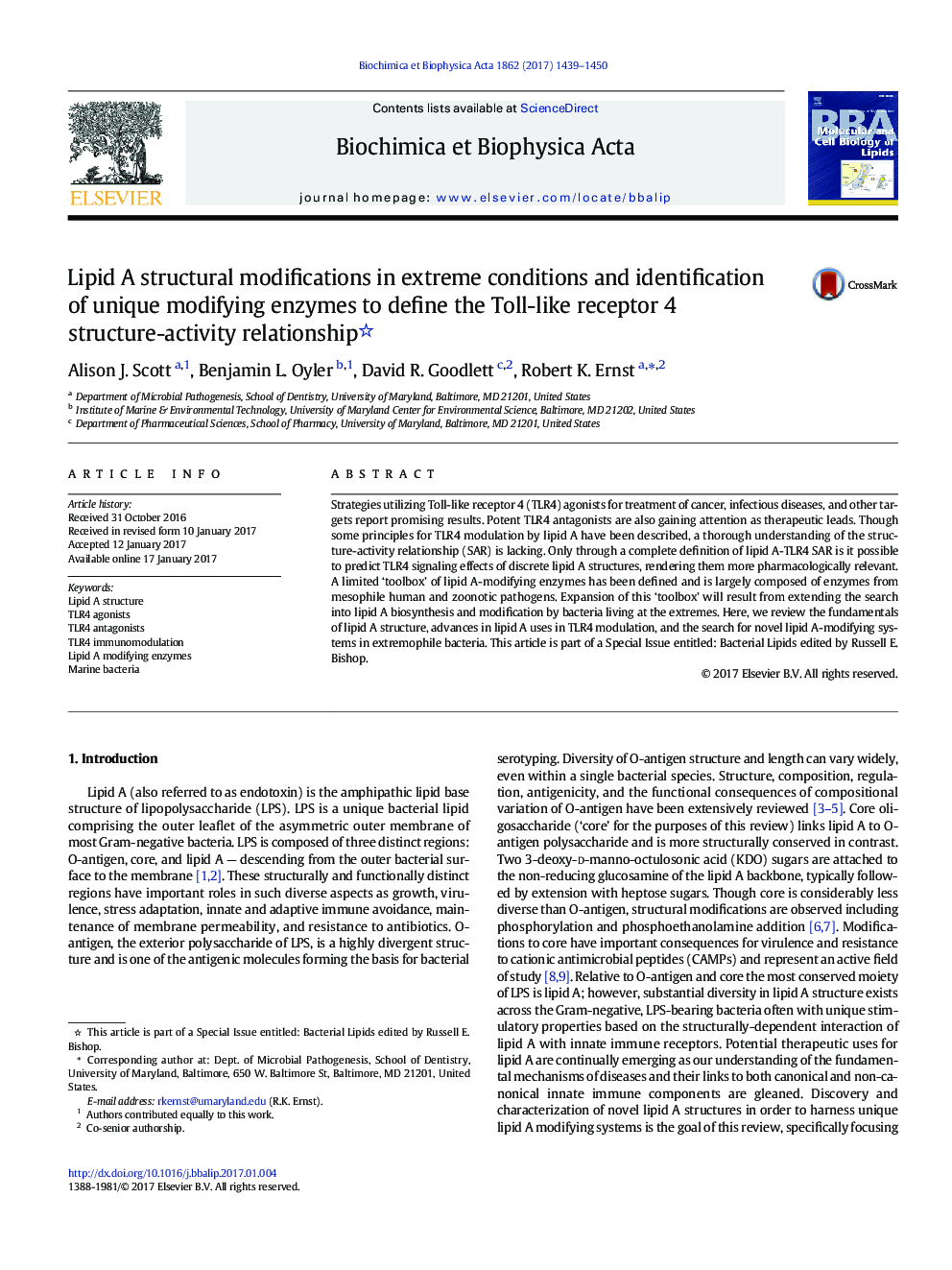| Article ID | Journal | Published Year | Pages | File Type |
|---|---|---|---|---|
| 5508310 | Biochimica et Biophysica Acta (BBA) - Molecular and Cell Biology of Lipids | 2017 | 12 Pages |
•Biosynthesis of lipid A is reviewed in the context of structure modification.•Contributions of lipid A moieties to TLR4 activity are reviewed for immunomodulatory potential.•Novel and inferred modification enzymes are reviewed in the context of drug discovery and design.•Advancements in separation and structural characterization of endotoxin is reviewed.
Strategies utilizing Toll-like receptor 4 (TLR4) agonists for treatment of cancer, infectious diseases, and other targets report promising results. Potent TLR4 antagonists are also gaining attention as therapeutic leads. Though some principles for TLR4 modulation by lipid A have been described, a thorough understanding of the structure-activity relationship (SAR) is lacking. Only through a complete definition of lipid A-TLR4 SAR is it possible to predict TLR4 signaling effects of discrete lipid A structures, rendering them more pharmacologically relevant. A limited ‘toolbox’ of lipid A-modifying enzymes has been defined and is largely composed of enzymes from mesophile human and zoonotic pathogens. Expansion of this ‘toolbox’ will result from extending the search into lipid A biosynthesis and modification by bacteria living at the extremes. Here, we review the fundamentals of lipid A structure, advances in lipid A uses in TLR4 modulation, and the search for novel lipid A-modifying systems in extremophile bacteria. This article is part of a Special Issue entitled: Bacterial Lipids edited by Russell E. Bishop.
